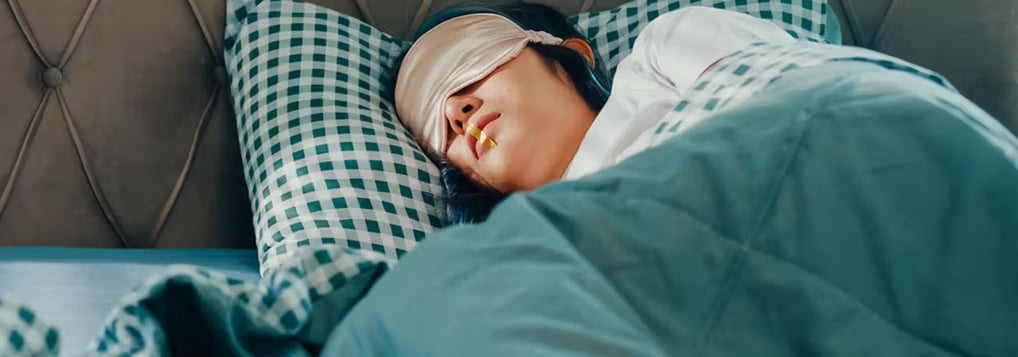We Tried It: My 5-Night Experiment With Mouth Taping
Medically reviewed by Thomas Johnson, PA-C — Written by Ginger Wojcik on March 17, 2025

Mouth taping may help encourage nasal breathing for people who mouth breathe. But it may not be a technique suitable for everyone (including me).


Mouth taping is the practice of sealing your lips shut with tape while you sleep to encourage nasal breathing. I’ve known about this fad health trend for years, but it wasn’t until a recent trip to the dentist that I became interested in trying it out for myself.
According to my dental hygienist, my teeth showed signs of mouth breathing, including tooth erosion and bruxism (teeth grinding). It was news to me that mouth breathing causes these issues, and truthfully, I took it hard. After a cavity-wrought childhood, I had grown into an adult who takes extra good care of her teeth.
So, after a quick search of “Has anyone died from mouth taping?” (no one has — that we know of), I online shopped for some tape.
The tl;dr is that I didn’t make it through a single night with the tape still on my mouth in the morning. But the experiment wasn’t a complete failure. Here’s how it went after 5 days.
What happened while mouth taping at night
I opted for this Nexcare option, which has 6.8k+ reviews and was under $8. (Specialized mouth tapes like this use a gentle adhesive that keeps your lips together without causing discomfort or skin irritation.)
I tried the tape on as soon as it arrived and found it stickier than expected. Taped horizontally across my entire mouth, it firmly held my lips shut — too firmly. It would have been difficult to force my lips apart if I needed to take a gulp of air. I made a mental note to use a smaller piece and place it vertically across my lips come bedtime.
Ultimately, there wasn’t much to tell: I could fall asleep with the mouth tape on all 5 nights. But each morning, I woke up with the tape somewhere else in bed or stuck to my body.
(One morning, I found it wrapped around the end of my thumb, and I have no memory of how it got there.)
Using a small piece of tape probably made it come off more easily. But this felt safer than risking it not coming off at all.
The thing is (and I should have taken this into stronger consideration before the experiment), I don’t breathe well out of my nose.
According to my ear, nose, and throat doctor, I have a partially deviated septum that restricts airflow to my left nostril and enlarged turbinates that restrict airflow to both sides. To top it off, I have semi-constant nasal congestion from seasonal allergies.
Long story short, the only way I can breathe through my nose is by sleeping on my right side. It turns out this is difficult to do for the entire night.
Are there any real benefits to mouth taping?
Very little research exists on the effects of mouth taping while sleeping, and no conclusive evidence shows this practice leads to benefits.
A small preliminary study from 2022 found that mouth taping during sleep may improve symptoms in mouth-breathers with mild obstructive sleep apnea (OSA). More research is needed to back up these early findings.
Mouth taping is meant to encourage nasal breathing, which may help:
filter allergens, dust, and bacteria through the tiny hairs (cilia) inside your nose
humidify and warm air before it reaches your lungs, reducing irritation
promote the production of nitric oxide, a compound that helps with circulation and oxygen delivery
reduce the likelihood of snoring and sleep disturbances
support better oral health by preventing dry mouth, which can lead to cavities and bad breath